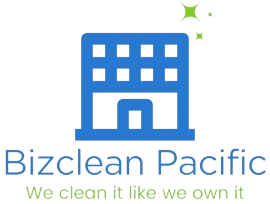Essential Factors in Carpet Water Damage Restoration
Carpets are an integral part of many commercial spaces, adding comfort, reducing noise, and enhancing the overall aesthetic. However, when water damage occurs, whether from a burst pipe, flooding, or an unnoticed leak, it can lead to significant issues. Understanding the key factors in carpet water damage restoration is crucial to mitigate the damage and restore your carpets effectively.

1. Immediate Response is Critical
The sooner you address water damage, the better the chances of restoring your carpet to its original state. Water left untreated for more than 24-48 hours can lead to mold growth, structural damage, and unpleasant odors. An immediate response can prevent these secondary damages.
2. Assess the Extent of the Damage
Not all water damage is the same. The source of the water can dramatically affect the restoration process:
- Clean Water: From sources like a broken pipe or rainwater. Generally less harmful but still needs quick action.
- Grey Water: From appliances like dishwashers or washing machines. Contains contaminants and can lead to health risks if not dealt with quickly.
- Black Water: Highly contaminated water, often from sewage or floodwaters. This requires professional cleaning and sanitization, as it poses severe health risks.
A thorough assessment helps determine the appropriate restoration approach and whether the carpet can be saved or needs replacement.
3. Water Extraction
The first step in the physical restoration process is to remove as much water as possible. Professional-grade water extractors are more efficient than consumer-grade options, ensuring that the bulk of the water is removed quickly. This step is essential to reduce drying time and prevent further damage.

4. Drying and Dehumidification
After extraction, the drying process begins. Air movers and dehumidifiers are used to remove moisture from the air and the carpet, opening doors and windows to increase airflow into the room will also help immensely. It’s crucial to ensure the subflooring and padding are thoroughly dried as well. Moisture trapped underneath the carpet can lead to mold growth and lingering odors.
5. Cleaning and Sanitization
Once the carpet is dry, cleaning and sanitizing are vital. This step not only removes dirt and debris brought in by the water but also eliminates any potential bacteria or mold spores. Depending on the extent of the water damage, different cleaning methods such as steam cleaning or antimicrobial treatments may be used.

6. Carpet Restoration or Replacement
After cleaning, the carpet is reassessed. In some cases, despite best efforts, the carpet may be too damaged to restore and will need to be replaced. For valuable carpets, restoration specialists can work to repair and restore the carpet to its pre-damage condition.
7. Preventing Future Water Damage
Once restoration is complete, it’s essential to address the source of the water damage to prevent future incidents. This might involve repairing plumbing issues, improving drainage, or installing water alarms to alert you to future leaks before they become major problems.
Conclusion
Carpet water damage can be a significant issue, but with quick action and the right approach, it’s possible to restore your carpets and prevent long-term damage. At Bizclean Pacific, we offer professional water damage restoration services tailored to your needs. Whether it’s a small leak or extensive flood damage, our team is equipped to handle the job efficiently and effectively. Contact us today to learn more about our services and how we can help keep your commercial space clean and safe.


